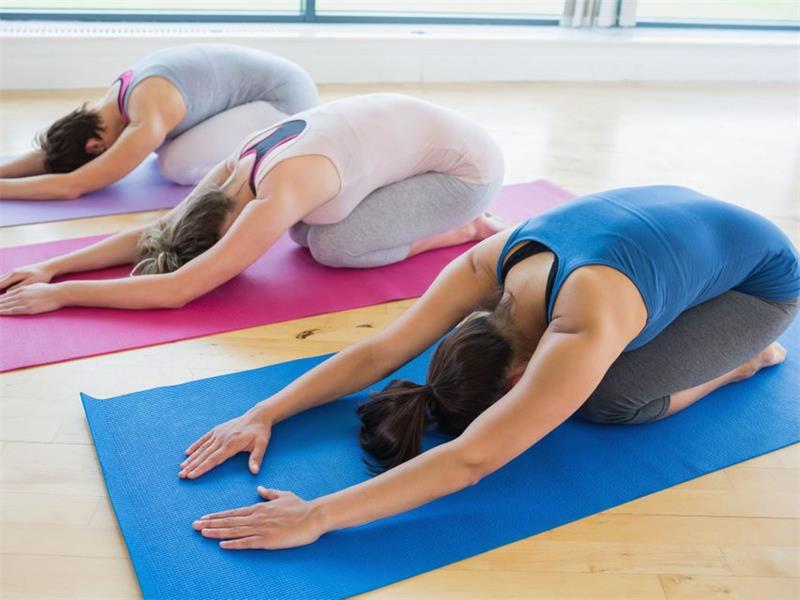Contents
The Power of Resistance Bands for a Full-Body Workout
When it comes to getting fit and staying in shape, resistance bands have become increasingly popular. These stretchy bands come in different sizes and tensions, providing a versatile workout tool that can be used in various exercises, targeting different muscles.
They are lightweight, easily portable, and can be used anywhere – at home, at the gym or even when traveling. But what are resistance bands exactly and how do they work?
Resistance bands are elastic bands made of rubber or latex that you use to build muscle strength and tone your body. They come in various levels of resistance – light (yellow), medium (green), heavy (red), extra heavy (blue), and ultra-heavy (black).
The level of resistance you choose depends on your fitness level and the specific exercise you want to perform. Incorporating resistance bands into your workout routine offers numerous benefits.
Resistance band exercises improve flexibility, mobility, coordination and balance while increasing strength without putting too much stress on the joints. Moreover, these exercises work multiple muscle groups simultaneously producing a full-body workout.
The Importance of a Full-Body Workout
It is common knowledge that exercise is good for our health as it reduces the risk of chronic diseases such as heart disease, diabetes or obesity while improving our overall physical and mental wellbeing. However, not all types of exercises provide equal benefits.
That’s why a balanced workout routine should include exercises that target all major muscle groups in the body – legs, hips, back, chest, shoulders, arms, and abs. A full-body workout is essential for achieving optimal fitness results as it ensures that all muscles are worked out evenly resulting in improved posture, balance, coordination, flexibility, endurance, and strength.
Furthermore including compound movements like squats or lunges helps burn more calories, increase heart rate and improve cardiovascular fitness. Resistance band exercises offer a fantastic way to achieve a full-body workout and improve overall health.
They provide an affordable, easy-to-use workout tool that can be used by anyone regardless of their fitness level or experience. From beginners to advanced athletes, resistance bands can help take your workouts to the next level and achieve your fitness goals.
The Resistance Band Squats
How to Set Up the Band for Squats
Before starting, you need to choose the right resistance band for your strength level. If you’re a beginner, it’s best to start with a lighter band and work your way up.
Once you have your band, step on it with both feet shoulder-width apart. Hold the other end of the band with both hands and lift it up so that your hands are next to your shoulders.
Proper Form and Technique for Squats with Resistance Bands
To perform squats with resistance bands correctly, stand up straight with your feet shoulder-width apart. Keep your back straight and your shoulders pulled back while looking forward.
Next, bend at your knees and hips, pushing your buttocks out as if to sit in a chair. Lower yourself down until your thighs are parallel or just below parallel to the floor.
It’s important to keep tension on the band throughout the exercise by pulling it taut as you lower yourself down into the squat position. As you rise back up from the squatting position be careful not to lock out at the top of the movement but rather maintain tension throughout.
Muscles Targeted: Quads, Glutes, Hamstrings
Squats are one of the best exercises that target multiple muscle groups simultaneously. Resistance band squats engage all three major muscles located in the lower body which include the quadriceps (thigh muscles), hamstrings (muscles on the backside of the thigh) and glutes (butt muscles). The use of resistance bands can make this exercise even more effective by adding a different level of resistance that doesn’t allow our muscles to the plateau which is great news for those who want a challenging workout routine without bulking up too much!
Resistance Band Chest Presses
How to Set Up the Band for Chest Presses
Resistance band chest presses are an excellent exercise to target your chest, triceps, and shoulders. To set up the band for this exercise, you will need a sturdy anchor point such as a door, pole or wall mount. Loop the resistance band around the anchor point and make sure that it is securely in place.
Next, grasp each handle of the band with your palms facing down and stand with your back to the anchor point. This should put enough tension on the band so that there is resistance when extending your arms forward.
Proper Form and Technique for Chest Presses with Resistance Bands
It’s essential to maintain proper form when doing resistance band chest presses to avoid injury and get the maximum benefit from this exercise. To start, keep your feet shoulder-width apart and engage your core muscles for stability.
Your elbows should be bent at a 90-degree angle with your hands directly in front of your shoulders. As you push forward, straighten your arms while keeping them slightly diagonally upward towards each other instead of straight ahead.
This angle targets more of your upper chest muscles than if you were pressing straight ahead. Inhale as you lower yourself back down into starting position with control while maintaining tension on the bands throughout each rep.
Muscles Targeted: Chest, Triceps, Shoulders
Resistance band chest presses are an effective way to target multiple muscle groups simultaneously because they work both primary pushing muscles like pecs (chest) as well as secondary muscles including triceps and shoulders. The pecs are responsible for flexing the shoulder joint while also rotating it inwardly; therefore, they play a crucial role in pulling movements like bench pressing or push-ups where we need them to stabilize our shoulder blades during heavy loads through pushing motion.
The triceps are the muscles located at the back of the upper arm that assist with the extension of the elbow joint. They get a great workout when doing any pressing movement, including chest presses with resistance bands.
Shoulders play a crucial role in pressing motions and are also targeted by this exercise. If you’re looking to build strength and definition in your chest while also working out other major muscle groups like triceps and shoulders simultaneously, resistance band chest presses are an excellent exercise to add to your workout routine.
Resistance Band Rows: Strengthen Your Back and Biceps
Resistance band rows are an excellent way to target both your back and biceps muscles while giving you a full-body workout. The best part is that you don’t need any fancy equipment, just a resistance band! Here’s how to set up the resistance band for rows, proper form, technique, and the muscles you’ll be targeting.
How to Set Up the Band for Rows
To set up the resistance band for rows, place the center of the band under your feet. Next, hold one handle in each hand with your palms facing each other.
Stand with your feet shoulder-width apart and keep your knees slightly bent. To increase resistance, move your feet closer together or step on the band with one foot.
Proper Form and Technique for Rows with Resistance Bands
Once you’re set-up, slowly pull both handles towards your chest while keeping your elbows close to your body. Try not to jerk or use momentum as it can lead to injury or improper muscle engagement. Hold this position for one or two seconds before slowly releasing back down to starting position.
Remember that good posture is key during this exercise- keep a straight back throughout all reps and avoid slouching or hunching over. Additionally, exhale as you pull up on the bands and inhale as you release.
Muscles Targeted: Back, Biceps
The muscles primarily targeted during this exercise are those in the upper back such as the trapezius and rhomboid muscles in addition to bicep engagement since they assist in pulling movements like these rows. This exercise also works core stabilizers since you are maintaining an upright posture throughout all reps.
Resistance Band Rows provide an efficient method of targeting several muscle groups at once through its simple setup yet effective form. Add this exercise to your full-body workout routine and see the results in your back and arm strength in no time!
Resistance Band Lunges
If you’re looking to add some variety to your lower body workout routine, resistance band lunges are a great option to try out. This exercise targets the quads, glutes, and hamstrings while also engaging the core for balance and stability.
How to set up the band for lunges
To set up the resistance band for lunges, start by standing in the center of the band with both feet. Then, step forward with one foot while keeping tension on the band with both hands. The farther apart your feet are, the more tension there will be on the band.
You can also anchor one end of the resistance band under your front foot or attach it to a sturdy object behind you for added resistance. Make sure that the anchor is secure and won’t come loose during your workout.
Proper form and technique for lunges with resistance bands
Begin by standing tall with your feet shoulder-width apart and holding onto each end of a resistance band with both hands. Take a big step forward with one foot while keeping your other foot planted firmly on the ground.
Bend both knees so that your back knee almost touches the ground while keeping tension on the resistance band throughout the movement. Push through your front heel to return to a standing position and repeat on both sides.
Muscles targeted: quads, glutes, hamstrings
Lunges are a great exercise for targeting multiple leg muscles at once. The quads are primarily responsible for extending or straightening out of the knee joint when performing this exercise.
However, lunge variations can target different aspects of this muscle group. The glutes play an important role in hip extension during lunges as well as stabilizing the pelvis to prevent excessive forward lean.
The hamstrings are also activated during lunges to extend the hip and bend the knee joint. Adding resistance bands to lunges can increase the activation of these muscle groups and add some variety to your workout routine.
Resistance Band Shoulder Presses
How to Set Up the Band for Shoulder Presses
To set up a resistance band for shoulder presses, you need an anchor point and a resistance band with handles. You can use a door anchor or loop the band around a sturdy object like a pole or tree.
Stand facing away from the anchor, holding the handles of the resistance band at shoulder height with your palms facing away from your body. Position your feet shoulder-width apart and brace your core for stability.
Proper Form and Technique for Shoulder Presses with Resistance Bands
Once you have set up the band, it’s time to perform the shoulder press exercise. Begin by pushing upward with both hands, extending your arms above your head until they are fully extended but not locked out.
Keep your wrists straight and avoid bending them inwards or outwards during the exercise. Slowly lower the handles back down to starting position at shoulder level while maintaining control of the resistance band tension throughout each repetition.
Muscles Targeted: Shoulders
The primary muscles targeted during resistance band shoulder presses are the deltoids, which are responsible for raising and rotating your arms as well as stabilizing your shoulders. The trapezius muscles in your upper back also play an important role in controlling movement during this exercise.
In addition to these main muscle groups, other supporting muscles such as triceps, biceps and chest muscles may also be engaged when performing this exercise with proper form. As you build strength over time, gradually increase the resistance level by using higher-resistance bands or adding more bands to create more tension on each repetition.
Conclusion
Resistance band exercises are an excellent way to get a full-body workout without the need for expensive equipment or a gym membership. These five exercises target all major muscle groups and can be done in the comfort of your own home. Resistance bands are also versatile and can be adjusted to meet your fitness level.
Whether you’re a beginner or an experienced athlete, resistance bands can provide a challenging workout that will help you reach your fitness goals. Incorporating resistance band exercises into your routine has numerous benefits.
Not only do they improve strength and muscle tone, but they also increase flexibility, balance, and coordination. Resistance bands are also low-impact and easy on joints, making them a great option for those with injuries or conditions that limit mobility.
Overall, incorporating these five resistance band exercises into your workout routine will help you achieve a toned and strong body while improving overall health and wellness. So grab some resistance bands and give these exercises a try – your body will thank you!













